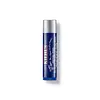What's inside
What's inside
 Key Ingredients
Key Ingredients

 Benefits
Benefits

 Concerns
Concerns

 Ingredients Side-by-side
Ingredients Side-by-side

Squalane
EmollientEthylhexyl Palmitate
EmollientCera Microcristallina
Emulsion StabilisingPolyethylene
AbrasiveIsopropyl Palmitate
EmollientPrunus Armeniaca Kernel Oil
MaskingButyrospermum Parkii Butter
Skin ConditioningParaffin
PerfumingSynthetic Wax
AbrasiveMentha Piperita Oil
MaskingSimmondsia Chinensis Butter
Skin ConditioningPrunus Amygdalus Dulcis Oil
Skin ConditioningSodium Saccharin
MaskingLimonene
PerfumingLinalool
PerfumingCitric Acid
BufferingSqualane, Ethylhexyl Palmitate, Cera Microcristallina, Polyethylene, Isopropyl Palmitate, Prunus Armeniaca Kernel Oil, Butyrospermum Parkii Butter, Paraffin, Synthetic Wax, Mentha Piperita Oil, Simmondsia Chinensis Butter, Prunus Amygdalus Dulcis Oil, Sodium Saccharin, Limonene, Linalool, Citric Acid
Paraffinum Liquidum
EmollientCera Microcristallina
Emulsion StabilisingParaffin
PerfumingHydrogenated Polydecene
EmollientDimethicone
EmollientTriacontanyl Pvp
HumectantDipentaerythrityl Tetrahydroxystearate/Tetraisostearate
Skin ConditioningGlycerin
HumectantSqualane
EmollientBrassica Campestris Sterols
EmollientTocopheryl Acetate
AntioxidantSynthetic Wax
AbrasiveEthylene/Propylene Copolymer
AbrasivePolyethylene
AbrasivePolyquaternium-61
Skin ConditioningBHT
AntioxidantParaffinum Liquidum, Cera Microcristallina, Paraffin, Hydrogenated Polydecene, Dimethicone, Triacontanyl Pvp, Dipentaerythrityl Tetrahydroxystearate/Tetraisostearate, Glycerin, Squalane, Brassica Campestris Sterols, Tocopheryl Acetate, Synthetic Wax, Ethylene/Propylene Copolymer, Polyethylene, Polyquaternium-61, BHT
 Reviews
Reviews

Ingredients Explained
These ingredients are found in both products.
Ingredients higher up in an ingredient list are typically present in a larger amount.
Cera Microcristallina isn't fungal acne safe.
Paraffin is a solid created from petroleum. The term 'paraffin' can also refer to either
petroleum jelly or mineral oil.
It has natural occlusive properties which can worsen oily skin. Due to its petrolatum base, this ingredient is not fungal-acne safe.
Polyethylene is a synthetic ingredient that helps the skin retain moisture. It is a polymer.
It is also typically used within product formulations to help bind solid ingredients together and thicken oil-based ingredients. When added to balms and emulsions, it helps increase the melting point temperature.
Squalane is an emollient that helps the skin hold onto moisture. It's an oily liquid that occurs naturally in certain types of fish and plant oils.
Because squalane boosts hydration in the skin, it also comes with plenty of benefits: it is an antioxidant and can help fight free radicals and skin damage. Squalane is also found to have a detoxifying effect when applied.
Squalane comes from squalene, which occurs naturally within the sebum of our skin. It is one of the oils our skin produces to keep itself hydrated. Squalane is the hydrogenated version of squalene and has a longer shelf life.
Research shows that squalane is non-irritating (even at 100% concentration).
In general, it's a fantastic ingredient. It does a great job at hydrating the skin, and it's suitable for those with sensitive skin.
The source of squalane may impact malassezia / fungal acne. This is because olive oil derived squalane can contain impurities such as fatty acids and plant waxes. Sugarcane derived squalane is recommended for anyone with malassezia concerns.
Is squalane vegan?
This depends on the source. Squalane can be derived from both plants and animals. Most squalane used in skincare comes from plants.
Please note: the source of squalane is only known if disclosed by the brand. We recommend reaching out to the brand if you have any questions about their squalane.
Read more about squalene with an "e".
Is squalane an oil?
Squalane is often called an oil, but it’s technically not; it’s a hydrocarbon, meaning it’s only made of carbon and hydrogen, unlike true oils which are triglycerides made of fatty acids and glycerol.
The term “oil-free” isn’t regulated, so companies can define it however they want. Some exclude all oils, while others just avoid mineral oil or comedogenic oils.
While some people avoid oils thinking they cause breakouts, the right kind of oil (or oil-like ingredient like squalane) can actually help balance and hydrate your skin. It’s worth testing out simple oils or squalane to see what works best for your skin.
Learn more about SqualaneSynthetic Wax is created from fossil fuels such as natural gas. It is used to enhance texture, adjust pH, and as an occlusive.
It may also be used as an abrasive ingredient to exfoliate the skin.
Synthetic Wax may not be fungal acne safe.
Learn more about Synthetic Wax